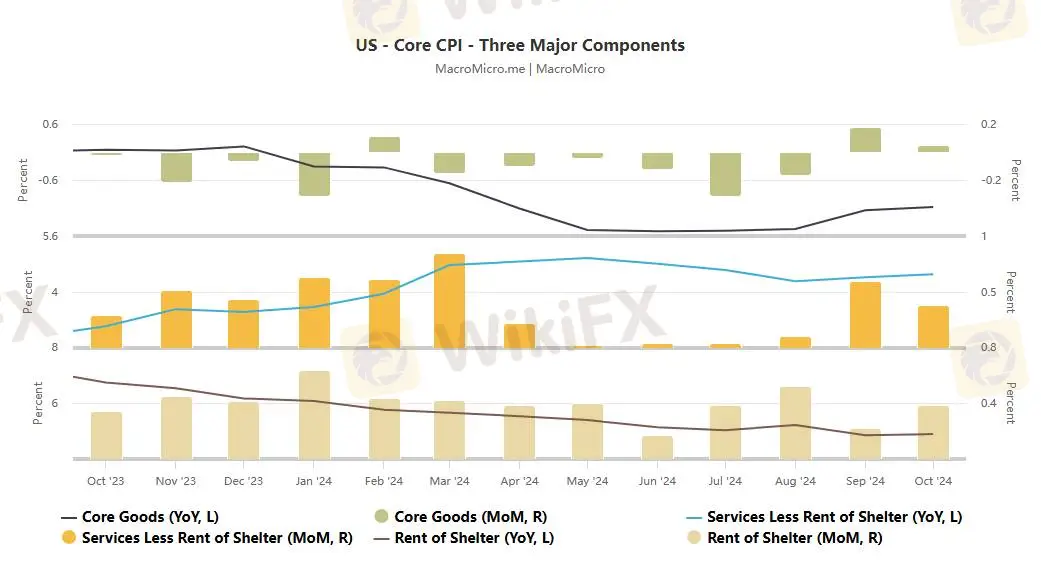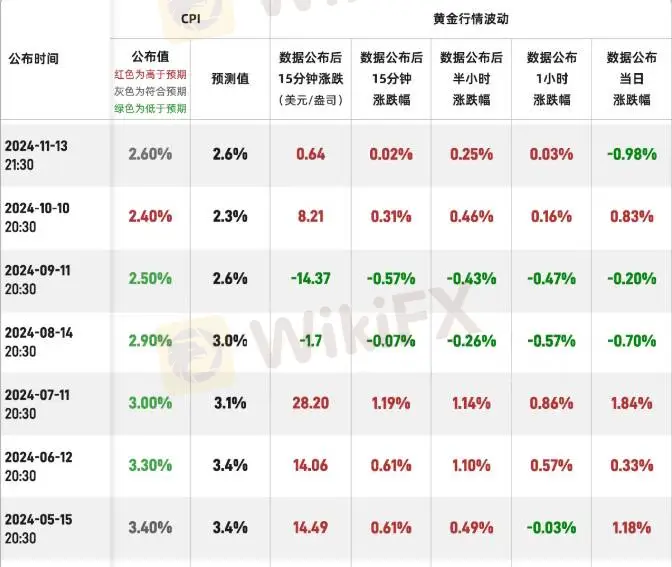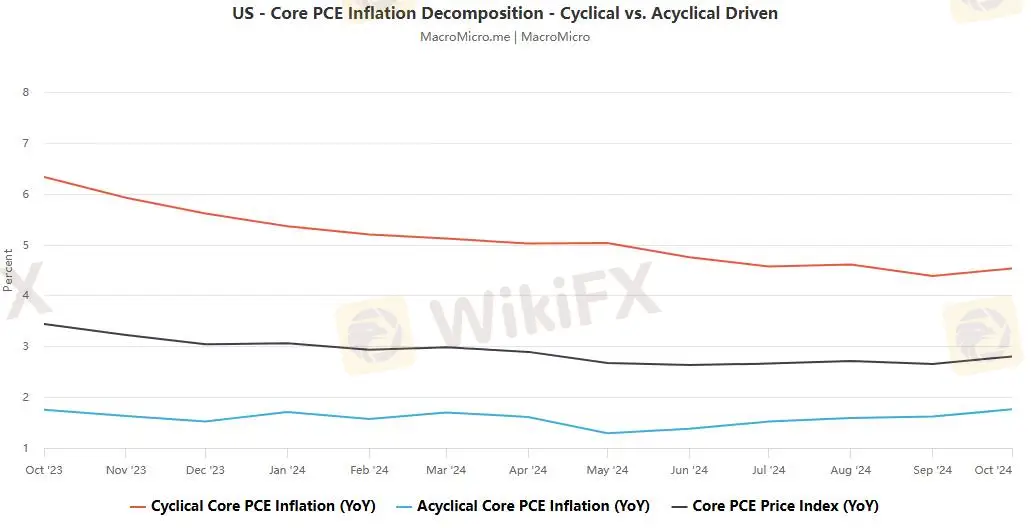【MACRO Insight】CPI data release: market volatility and uncertainty in the Fed’s rate cut path
Sommario:Although market concerns about U.S. inflation have eased, Bank of America said in a report on Monday that the upcoming November CPI data may have a greater impact on U.S. stocks than investors think.
Although market concerns about U.S. inflation have eased, Bank of America said in a report on Monday that the upcoming November CPI data may have a greater impact on U.S. stocks than investors think. The U.S. November CPI report will be released at 21:30 on Wednesday, and economists expect the CPI to grow 2.7% year-on-year, slightly higher than 2.6% in October. Bank of America strategists said that after the market's muted reaction to CPI readings in the past few months, this inflation data may be particularly influential for U.S. stocks.
Ahead of the latest inflation update, options pricing was implying a 0.64% move in the S&P 500 on Wednesday, which would be the smallest move relative to CPI since inflation began rising in 2021, according to Bank of America data. Although concerns about U.S. growth have subsided since the summer, inflation appears to be gradually picking up again.

“Against this backdrop, we believe the two remaining major events of the year (CPI and FOMC meeting) could set the market's short-term direction,” Bank of America strategists said. “A more dovish data could clear the way for a year-end rally in U.S. stocks, with the second half of December typically the second-strongest period of the year.” “Conversely, a stronger CPI could reignite volatility, especially as U.S. stocks have rebounded 5% since the election,” the strategists added.
More importantly, inflation data will influence the Fed's next interest rate decision. If there is an upside surprise, it will likely increase the probability that the Fed will pause its rate-cutting cycle sooner. “We think the CPI data will be mild enough to confirm a December rate cut,” BofA added. “Given the uncertainty in the policy outlook, a stronger-than-expected report could lead to more rate cuts being unpriced in, while a milder-than-expected report leads to more rate cuts being priced in.”
According to CME's FedWatch tool, the market expects the Fed to cut interest rates by another 25 basis points at its meeting next week with about an 86% chance. However, the Fed's path of rate cuts next year is more uncertain. The probability of another rate cut in January has fallen to about 22%, while the probability of no change is 67%. Multiple forces could cause U.S. inflation to remain above the Fed's 2% target next year, while undermining investors' hopes for easing inflation and multiple rate cuts from the Fed.

The main risk for 2025 is President-elect Trump's tariff and immigration proposals. Market watchers say that before the details of these plans emerge after Trump takes office in January, market participants remain hopeful that inflation can remain under control and that Trump's comments are just negotiating tactics. But investors and traders may also end up being wrong by underestimating the possibility of a pick-up in U.S. inflation.
Traders have taken note of Hatzius's views and incorporated some of them into their forecasts for the consumer price index next year. Traders now expect the November CPI data released on Wednesday to rise again, and the annual rate of core CPI inflation to remain above 2% until October next year.
That means the economy will start to 'stagnate' and we could have more severe stagflation. But we don't call that our base case at this point.“ For now, Persson's view is that fixed income is the best option for investors who don't currently own fixed income assets after weighing the risks and rewards, as U.S. Treasury yields will ”offer quite attractive return potential over the next 12 months.

If Nuveen is wrong and the economy falls into a more severe stagflation scenario - high inflation and slowing growth - “U.S. stocks will face challenges, so cash will be the best performing asset class.” “The nature of post-epidemic inflation is that the new crown has changed people's perception of things. Even if inflation expectations are stable, people still feel very damaged and are prepared for more price increases,” said Derek Tang, an economist at Monetary Policy Analytics, which was founded by former Federal Reserve Governor Larry Meyer.
“Companies and households are adjusting to higher inflation now, not because they want to, but because it is reality,” Tang said by phone. “If we get another shock, the public may shift to an inflationary mentality and could get stuck in a wage-price spiral.” If Wednesday‘s CPI report surprises with an upside surprise and an upward revision to the prior reading, “that will change policymakers’ perception of what‘s going on,” Tang noted. “That’s more about the 2025 story than the December rate cut story,” he added, referring to the possibility that the Fed could slow its pace of rate cuts in 2025. “The policy rate is still above neutral, so theres still some room to cut before officials have to answer the really tough questions,” Tang said.
WikiFX Trader
WikiFX Trader
Rate Calc


